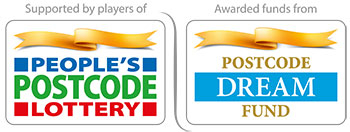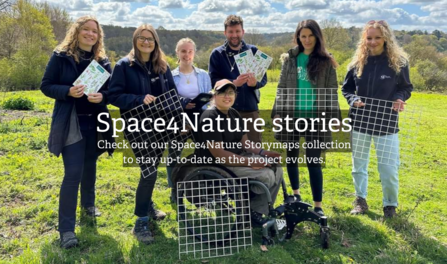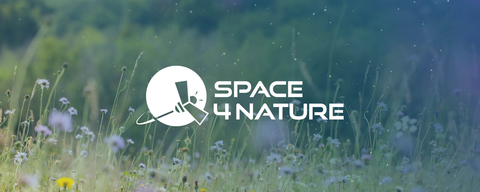
Using satellites and AI to map habitats
This three-year project - made possible thanks to players of People's Postcode Lottery - sees the University of Surrey and Surrey Wildlife Trust working in partnership with Buglife and the Painshill Park Trust. The team has enlisted the help of the public to inform their work in the newly emerging field of Earth Observation – combining satellite technology and artificial intelligence – to monitor and improve wildlife habitats.
Interested in getting involved with the Space4Nature project? Register below and we'll be in touch as soon as possible.
Project updates
Watch our Space4Nature videos to learn more about the project.
Training Volunteers
Space4Nature: Training Volunteers (https://youtu.be/epfIENb0lFk)
Surrey Wildlife Trust's Citizen Science Officer Daniel Banks trains a group of volunteers on mapping a heathland site.
Mapping using Machine Learning
Space4Nature: Mapping Habitat using Machine Learning (https://youtu.be/qfYSll_EvbQ)
Professor Richard Murphy and Dr Ana Andries demonstrate how machine learning, mapping and very high resolution satellite imagery are used to support the project.
Mapping Habitat on Puttenham Common
Space4Nature: Mapping habitat on Puttenham Common (https://youtu.be/VaLnxS4TmPw)
Citizen Science Officer Daniel Banks and Research and Monitoring Manager Ben Siggery are joined by Molly Biddell from the Hampton Estate. Along with a group of volunteers, they map the habitat on a section of heathland on Puttenham Common.
Palaeoecology Research at Chobham Common
Space4Nature: Palaeoecology Research at Chobham Common (https://youtu.be/jiwE90dcGX4)
How wildlife rich should Surrey be in the absence of contemporary human influence? For his PhD, Ben Siggery is carrying out palaeoecological research (the study of interactions between organisms & their environment through time) to inform our habitat restoration targets, alongside Space4Nature satellite technology to track progress.
Space4Nature Open Forum 2024
Celebrating our success
2024/25 Case studies
Peter Hewetson: forging connections and embracing technology
Peter Hewetson, 60, from Dorking became aware of the Space4Nature project via the Surrey Wildlife Trust website. Upon contacting Citizen Science Officer Dan Banks, Peter began volunteering at Quarry Hangers nature reserve near Caterham in summer 2023, where he conducted plant surveys, recording indicator species which typify chalk grassland habitat.
As well as reporting that participating in Space4Nature helped him hone his plant identification skills, Peter says that using the S4N phone app and learning about involvement of satellite technology and AI in the project helped him boost his IT and tech skills in a practical context.
He says that thanks to the collaboration with Surrey Uni and Buglife, he was able to network with other volunteers and SWT staff, both at volunteer briefing meetings and while out on site. This forged friendships and connections with the potential to endure after the conclusion of this project. These positive experiences have made him more likely continue to volunteer, especially for SWT – and more likely to work for an NGO rather than in the private sector in future.
He was motived to become involved because he was excited by the opportunity the project represented to harness technology and citizen science to improve nature, leading to more land managed for conservation and less fragmentation of nature-friendly sites on the road to the international 30by30 target.
Tessa Colman: a wider perspective on volunteering
Tessa Colman, aged 67, from north Surrey, has been a volunteer with SWT at Nower Wood education centre and with the Trust’s conservation grazing team as a cattle Lookers for some years, thanks to her lifelong passion for nature.
Tessa was excited about S4N from the outset, when Citizen Science Officer Dan Banks spoke in person to volunteers at Nower Wood at the beginning of the project in 2023. Specifically, she was motivated by S4N’s focus on practising a joined-up, collaborative approach which benefits local areas but also looks at the bigger picture. Since then she has appreciated regular updates and newsletters from Dan about current and future areas of focus.
In 2023 she took part in the lowland heath plant data collection on Chobham common. In 2024 the focus was chalk grassland plant data collection, which she helped undertake at Sheepleas nature reserve in West Horsley. Tessa also helped survey Grayling butterflies on Chobham common.
For plant data collection, Tessa’s task was to enter weather conditions then plant details and numbers within marked quadrats. For the Grayling butterflies it was a case of finding one specimen, then spending 10 minutes observing and logging other Grayling numbers, behaviour and conditions within a 10-metre diameter area, also using the S4N app.
Although Tessa was already generally familiar with heathland and grassland plants, she reports that she gained a lot of new knowledge about many different plant species and about Graylings. She also really enjoyed the opportunity to do useful work out-of-doors ‘in some beautiful locations’.
Space4Nature has influenced Tessa’s future plans in that despite her being an established volunteer, the project has provided an insight into new areas of nature conservation outside of her previous ‘comfort zone’. She says that she’ll be looking out for more opportunities as and when they arise.
B-Lines: transforming habitats for pollinators
Space4Nature Conservation Officer Louis Harrington-Edmans led habitat improvement work in several locations across Surrey as part of Buglife’s B-lines project, which is working to create connected corridors of habitat to enable the wellbeing and movement of pollinators and other wildlife nationwide. Two examples of specific work made possible with investment from Space4Nature are below.
Rosamund Meadows: trialling chemical-free scrub management
Rosamund Meadows, on the north downs near Guildford, is a four-hectare mosaic of species-rich chalk grassland and scrubland.
In this location the team successfully trialled a novel mechanical scrub clearance using a bespoke excavator attachment to remove large woody scrub that had a history of being coppiced, and was too overgrown to be dealt with using volunteers or targeted grazing.
Many contractors and wildlife groups had previously suggested the scrub would have to be cut and treated with glyphosate, which was not an acceptable option for Buglife or the landowners due to the risk of harming invertebrates and other species on this fragile habitat.
Over two years S4N trialled the attachment to remove the scrub, including removing associated roots, reprofiling the site into a habitat mosaic of scrub of various ages with crucial areas of open species-rich chalk grassland.
Over the years we expect this to improve the ability of the Trust’s conservation grazing cattle to access and effectively graze the area, thus boosting floral abundance and diversity within the sward and creating better habitat for invertebrates, reptiles and Skylarks. Orchids are already appearing in the areas cleared.
Furthermore, disturbance to soil was minimal, while the limited areas of bare ground created will create nesting opportunities for solitary bees and wasps and basking areas for the butterflies onsite. Species of butterfly that will benefit from the overall improvements include the Small Blue, Grizzled skipper and Dingy Skipper.
In summary, good conservation outcomes were attained at competitive with prices, without the added concerns of introducing chemicals that are harmful to wildlife and humans. Buglife has subsequently trialled this methodology with Guildford Borough Council on its sites at Tytings Meadows and The Mount, with further success. This will help the council deliver on its policy of reducing the use of harmful herbicides.
Denbies Vineyard: improving habitat in a commercial setting
Denbies Vineyard, near Dorking, holds 2.4 hectares of species-rich chalk grassland.
Working with Denbies Vineyard, Buglife and Space4Nature hosted a workshop engaging landowners in the strategically important Mole Gap, home to some of Surrey’s rarest invertebrates including Adonis Blue butterflies, Straw belle moths and Shining Pot-beetles, to accelerate efforts to deliver B-Lines habitat.
We recognised an interest in sustainability within the Denbies Vineyard team due to the estate’s certified Net Zero accreditation, and membership of the Sustainable Wines of Great Britain (SWGB), and history of working effectively with Jenny Desouttre. However, the Denbies team voiced some concerns over the potential impact of B-Lines habitat on production, the perceived appearance to visitors and ongoing management commitment. Our team was able to provide advice - for example around mowing ‘harder’ edges and paths through meadow restoration areas - to minimise these concerns.
While we also then took steps to reintroduce Yellow Rattle, a hemiparasitic plant that supresses grass, making restoration areas look tidier but also allowing wildflowers to compete and thrive. This has the double impact of making areas look more attractive at the same time as providing more feeding opportunities for local pollinators. This shows how aligning goals and finding creative solutions to anticipated challenges can help deliver for pollinators – in this case including the Red-tailed Mason-bee and Small Blue, Adonis Blue, Grizzled Skipper and Dingy Skipper butterflies - in commercially-productive landscapes.
The Buglife team has subsequently carried this model of Yellow Rattle reintroduction and meadow management to several other landowners including the National Trust at Polesden Lacey as well as Albury Vineyard and Mickleham church.
Wilder Schools: introducing a new generation to conservation
Surrey Wildlife Trust’s Wilder Schools programme works with schools throughout the county to introduce pupils, teachers and families to simple steps they can take to conserve nature, with an initial emphasis on improving school grounds for wildlife.
Through Space4Nature, an increased focus has been placed on mapping and connecting habitats on a local level, mirroring the wider aims of the S4N project – and more than 60 schools have taken part in talks, visits and practical training sessions as part of this strand of the programme. Through sweep netting, bird watching, tree ID games and minibeast hunts they have looked at where nature thrives in the grounds and learnt about what actions they could take to enhance other areas. They have used satellite images and aerial photographs to consider the schools’ setting in the landscape and potential to link up with other habitats. The students have then developed and implemented plans for how the school grounds could be enhanced for nature – including the creation of meadows, ponds and connecting hedges, and the planting to date of over 1,000 tree whips, with advice and support from SWT’s Wilder Schools team. Students have designed posters and prepared assemblies to inform the wider school community of their intentions and presented these to their peers and teachers during assemblies and special sessions. In some schools, older children who have completed work through the project have ‘buddied’ with younger cohorts to help them implement their own plans for nature.
Many children have visited SWT’s education centre at Nower Wood, near Leatherhead to learn how to learn from other S4N project schools, celebrate their achievements and undertake training in how to identify plants and invertebrates - all skills they will use to monitor the new habitats in their grounds, which include hedgerows, raised beds for pollinating plants, ponds, no mow areas and meadows.
The S4N team has also encouraged families to take similar actions at home and record these on the Trust’s Geographical Information System (GIS) using ArcSurvey123 so that the students can see them spatially. This demonstrates to participants a) that digital technology has a big and growing role in conservation and b) that their small actions can quickly start to have a big impact. To date, families have logged over 1,000 actions for nature, ranging from the installation of bird feeders and ponds to the planting of native plant species to benefit pollinators.
The S4N team also attended the 2024 Teen Tech festival event in Brighton, where they trained 72 teenagers to carry out habitat assessments on chalk grassland and heathland sites using Survey123 software. It is hoped this that will open young minds to the possibility of careers or at least voluntary work in the fast-evolving conservation and land management sectors.
A YouTube animation, exploring the key themes of the project and suggesting ways to help wildlife, has been produced by SWT for use within schools visit:
https://www.youtube.com/watch?v=BP0ht_B5Zp0
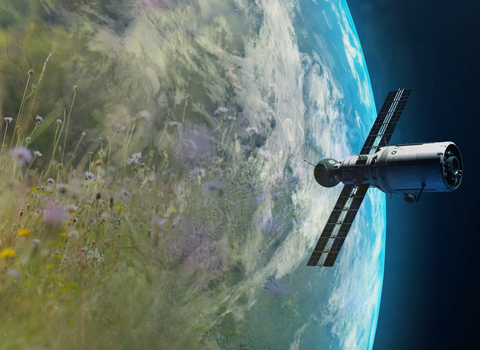
HALO Hub
The Habitat And Land Observation (HALO) hub is a place for researchers, practitioners, and those undertaking commercial innovation in the sector. It is a forum to share research, projects, events, and discussion related to the use of technology in monitoring and supporting UK nature recovery.
The HALO hub specialises in satellite and land observation techniques including use of high-resolution satellite imagery, UAV/drones and bio-acoustics for informing and monitoring habitat restoration across the UK.
Join, discover and discuss! Create an account to be a part of the network, add relevant resources, take part in discussion and create a place for shared learning for the development of nature recovery in the UK.
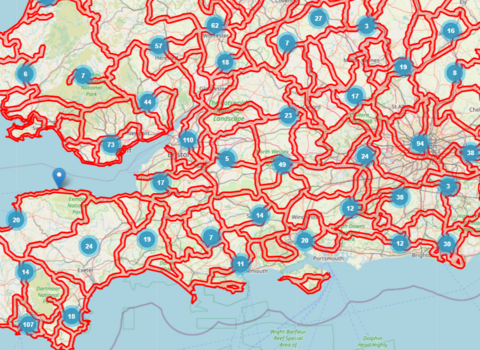
B-Lines
"B-Lines are a series of ‘insect pathways’ running through our countryside and towns, along which we are restoring and creating a series of wildflower-rich habitat stepping stones." - Buglife UK
Buglife’s B-Lines initiative is the world’s largest co-ordinated solution to habitat fragmentation and loss. Composed of mapped 3km wide belts joining the best remaining areas for nature across the UK, Buglife aims to fill these B-Lines with permanent wildflower-rich habitat to reconnect our landscapes for wildlife.
The Space4Nature project is the first project to begin reconnecting Surrey’s B-Line, with over 30 hectares of wildflower-rich habitat now delivered as part of the project. The satellite mapping technology Space4Nature is developing will address one of the foremost challenges Buglife face by providing a complete picture of habitats at a landscape scale.
News & Blogs
Keep up to date with the latest project news and developments, including blogs from Project Manager Andrew Jamieson and Space4Nature PhD student Ben Siggery.
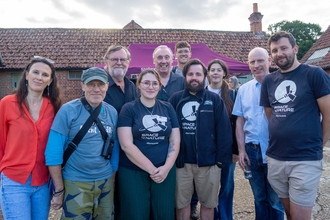
Space4Nature showcased at COP30
Surrey’s Space4Nature project showcased at COP30 as a model for tech-powered biodiversity action

Celebrating Space4Nature
Celebrating the success of our groundbreaking Space4Nature project.

Space4Nature volunteers to target Surrey’s acid grasslands
AI-driven conservation project uses power of local research

Summer success for Space4Nature
Space4Nature, SWT’s innovative landscape-mapping project made possible by players of People’s Postcode Lottery, has made further…
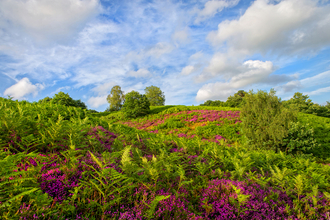
Hampton Estate invites local community to a ‘bioblitz’ on Puttenham Common
Free activities offer a great way to learn about Surrey’s wonderful wildlife

Space4Nature receives Nature & Environment award
On Wednesday 12 June, the Space4Nature team were the proud winners of the Nature and Environment category at the 2024 Geospatial…

